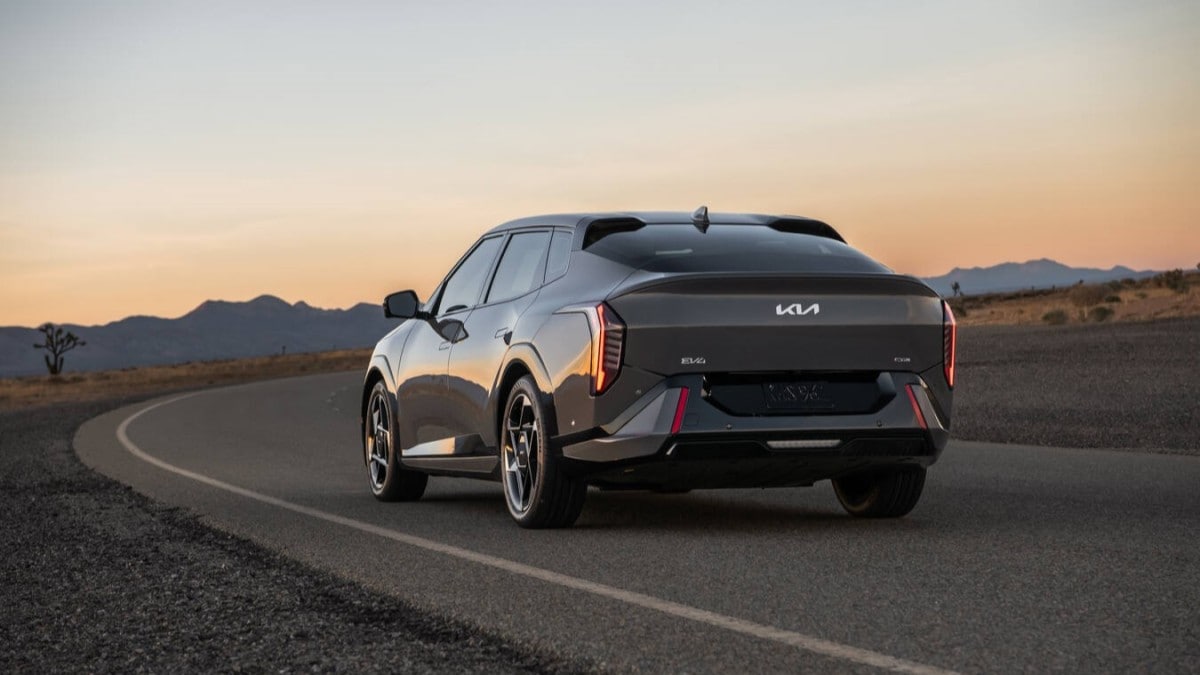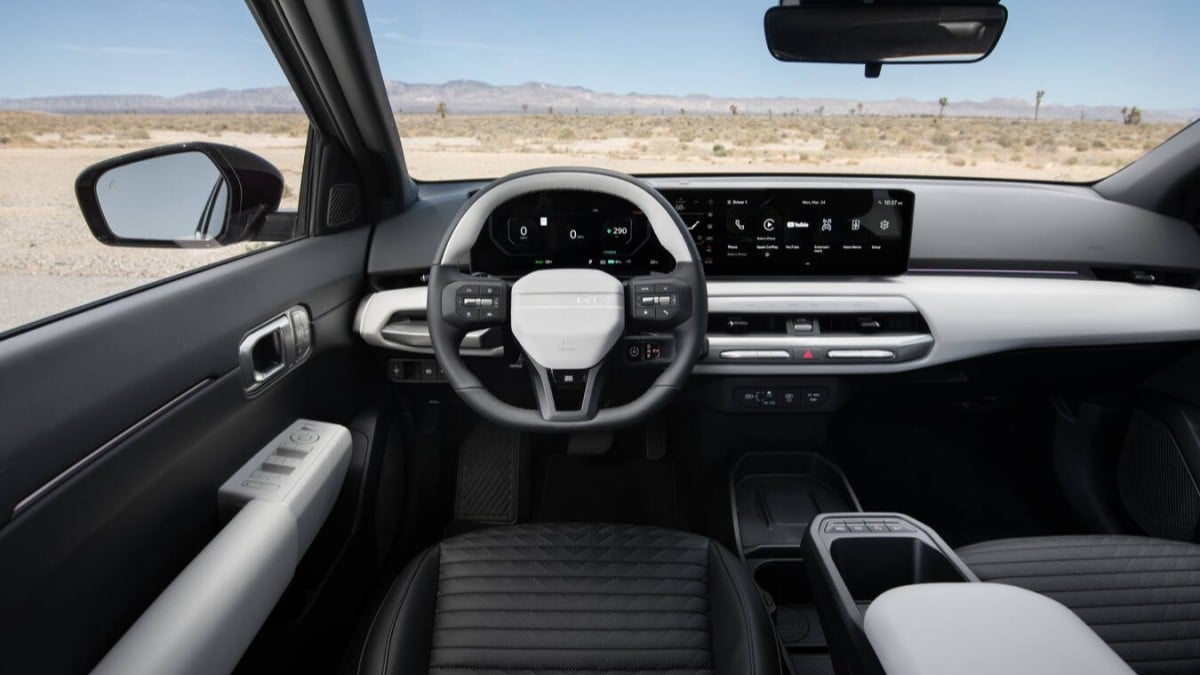Categories are sometimes helpful. But they’re often boring. Some of the most interesting things in the world, and the most useful, are the ones that straddle the lines.
For the 2026 model year, Kia will bring an all-new electric vehicle (EV) to the United States that is a little hard to explain. Such inscrutability could make it just right for some buyers. Or, it could end up as an automotive footnote because no one knew what to make of it.
The 2026 Kia EV4 is about the size of a compact car. But Kia didn’t simply design an electric version of its K4 sedan and call it a day. Instead, the EV4 will be instantly one of the oddest things on the road.
It appeared in the U.S. for the first time at this week’s New York International Auto Show.

Hatchback-ish Lines Without a Hatch
Kia calls the EV4 a sedan. In its defense, it lacks SUV ride height and has four doors and a trunk-style rear opening, which is a reasonable definition of a sedan.
But it’s taller than most compact cars, and in profile, its angular fastback rear looks as though it should open like a hatch. It doesn’t. Only the rearmost portion lifts, revealing a deep trunk.
Upright sides and a nose bracketed by vertical lighting elements contribute to the almost-SUV-like proportions.
Kia says it shares “the same fundamental design language as that of the ground-breaking Kia EV6 and EV9 models,” both SUVs. The company says, “Establishing a new typology, the [EV4] sedan combines a low nose, long-tail silhouette, and fastback roofline for a unique and sporty profile.
Kelley Blue Book saw an early design model of the EV4 in Seoul two years ago. At the time, designers were clearly proud of their work, but struggled to define it. Two years of refinement haven’t made it fit into an obvious category. But that could work well for car shoppers looking for something memorable, with a higher seating position and better sight lines than a traditional car.
Inside, the showstopper is a 30-inch-wide screen surface that is actually three separate screens. The driver gets a 12.3-inch model in place of the traditional gauge cluster. A second 12.3-inch screen to the right handles entertainment functions. Between the two, a smaller 5-inch screen is inset, which can be configured to show climate, entertainment, or other information.
Kia didn’t mention it in New York, but in the past, the company has said the screens can show streaming entertainment in a special “theater mode” when parked. Owners can also use them to display themes, “such as their favorite NBA team, for a personalized cockpit aesthetic.”
A row of buttons beneath saves you from using touchscreen menus for everything.
A free-floating center console includes a slide-out tabletop.
An AI-powered virtual assistant “ utilizes machine learning to achieve a higher level of organic interaction and greater voice recognition between the driver and the vehicle.”


201 Horsepower, up to 330 Miles of Range
Every EV4 uses a single motor, which is good for 201 hp, powering the front wheels.
The entry-level Light trim will get a small, 58.3-kilowatt-hour (kWh) battery, giving it a range of up to 235 miles. The midlevel Wind and high-end GT-Line trims will get a larger 81.4-kWh cell and a range of 330 miles.
Curiously, the EV4 does not share the 800-volt architecture of most current Kia EVs. Instead, it’s built on a slightly slower-to-charge 400-volt setup like that found in most Tesla products. Still, Kia says Light models can go from 10% to 80% charge in 29 minutes attached to a DC fast charger. Wind and GT-Line models will take 31.
All versions use a Tesla-style charging port so owners can recharge at Tesla Superchargers.
The EV4 will be capable of putting out power as well as absorbing it, so owners can use it to power “compatible external devices, including a variety of laptops, lighting, and smaller electronics,” Kia says.
The EV4 should reach dealers in “early 2026.”
Most automakers have launched SUVs as their first electric vehicles. leaving few electric options for those who prefer a sedan. The EV4 comes to do battle against the Tesla Model 3 and Hyundai Ioniq 6. We presume pricing will be competitive with those two, but Kia hasn’t revealed what it expects to charge.

